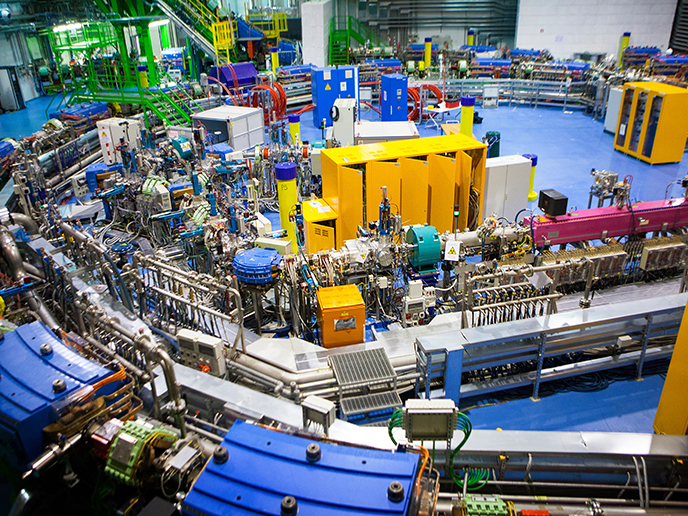Searching for evidence of New Physics
The Standard Model (SM) is a theory which encapsulates knowledge about the fundamental particles and their interactions. The Large Hadron Collider (LHC) in Switzerland is currently stress testing the SM by precisely measuring reactions among different particles. These measurements are compared with SM predictions to identify deviations which could point to New Physics (beyond the SM). New Physics can be probed even when new particles are too heavy to be directly produced by collisions, as these modify the interactions of the already-known particles. By precisely measuring these interactions, researchers can extract the first traces of the New Physics. The EU-supported HEFTinLOOPS project used the theoretical framework known as Effective Field Theory (EFT) to compute the potential impact of undiscovered heavy particles on the various Higgs boson and top quark production processes, measured at the LHC. As the top quark and the Higgs boson are the two heaviest elementary particles, and have the least understood interactions, they play a crucial role in theories of New Physics. The project, conducted with support from the Marie Skłodowska-Curie programme, provided theoretical predictions for the LHC’s Standard Model Effective Field Theory (SMEFT) programme. It developed the tools needed by experimentalists and theorists for the task. HEFTinLOOPS also produced precise computations for various particle scattering processes, focusing on the production of top quark and Higgs as well as on the interpretation of LHC measurements within the SMEFT.
Precise calculations
HEFTinLOOPS set out to predict how the probability of producing a Higgs or top quark particle at the LHC would change if some as yet undiscovered heavy particles existed. To do so, the project first had to develop the techniques and computer codes necessary for the precise predictions that would allow the extraction of information about these particles. To perform these computations, HEFTinLOOPS developed components of a Monte Carlo generator. This is a computer code which predicts how often a scattering process will occur at a collider. By doing so, it can calculate the impact of new interactions on the rates of Higgs or top quark production. The researchers considered several modes for producing the Higgs particle, including a Higgs in association with a top quark, with quantum chromodynamics (QCD) jets and a vector boson, as well as double Higgs production. All these processes are important because they offer insights into how the Higgs particle interacts with the other particles of the SM, and with itself. “The project involved a lot of analytical calculations, but also the coding of new results into computer tools. This was an important goal as it made the results available to the whole collider physics community,” explains Eleni Vryonidou, Marie Skłodowska-Curie Fellow. When comparing theoretical predictions for top quark production with LHC data, the project found no significant deviations from the SM predictions, but by setting the most stringent constraints for new top quark interactions, it furthered the search for New Physics.
Towards New Physics
HEFTinLOOPS produced the first precise computational tools necessary, accounting for uncertainties, for different predictions for Higgs and top quark production at the LHC, within the framework of EFT. The theoretical results of the project and the associated tools have already been extensively used by the wider particle physics community to interpret their measurements, helping them pin down the scale and nature of the New Physics. “HEFTinLOOPS improves our understanding of the smallest constituents of matter and their interactions, helping answer some of nature’s most fundamental questions,” says Vryonidou. Following the comparison of SM predictions for top quark production with LHC measurements, the next step will be to do the same for the Higgs boson.
Keywords
HEFTinLOOPS, New Physics, Higgs boson, top quark, Standard Model, Large Hadron Collider, Effective Field Theory, particles, collisions







